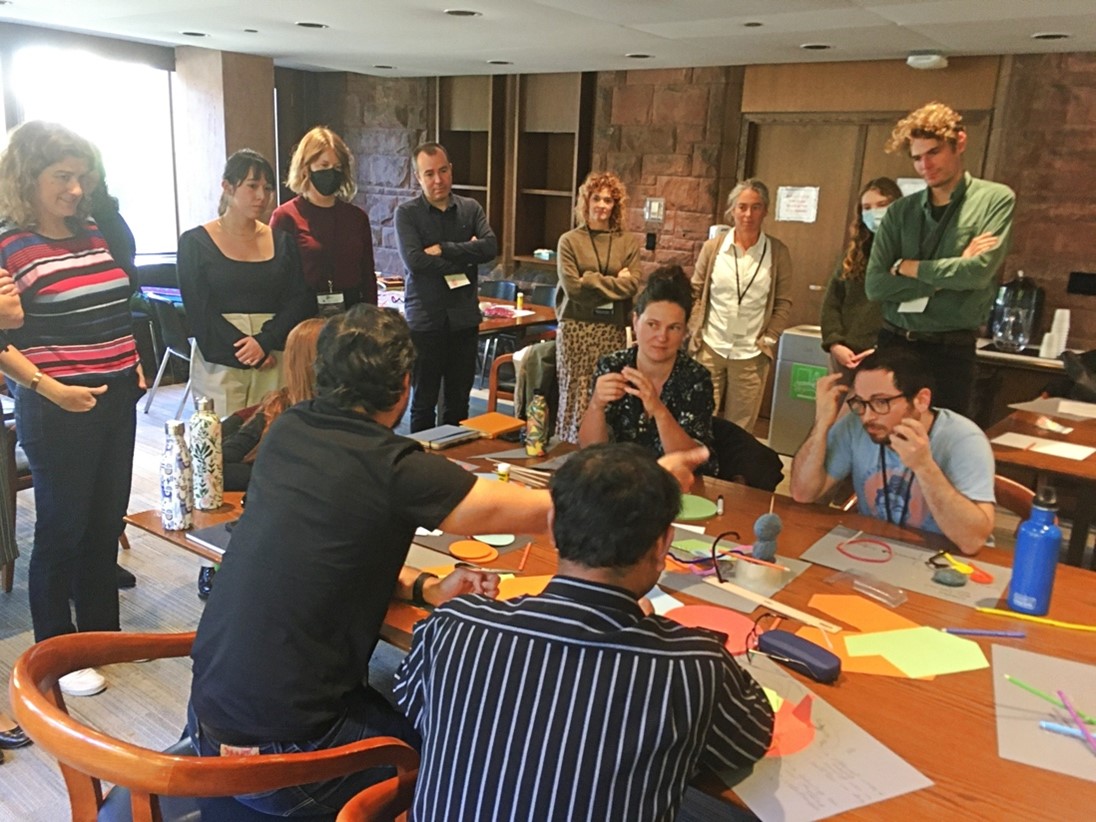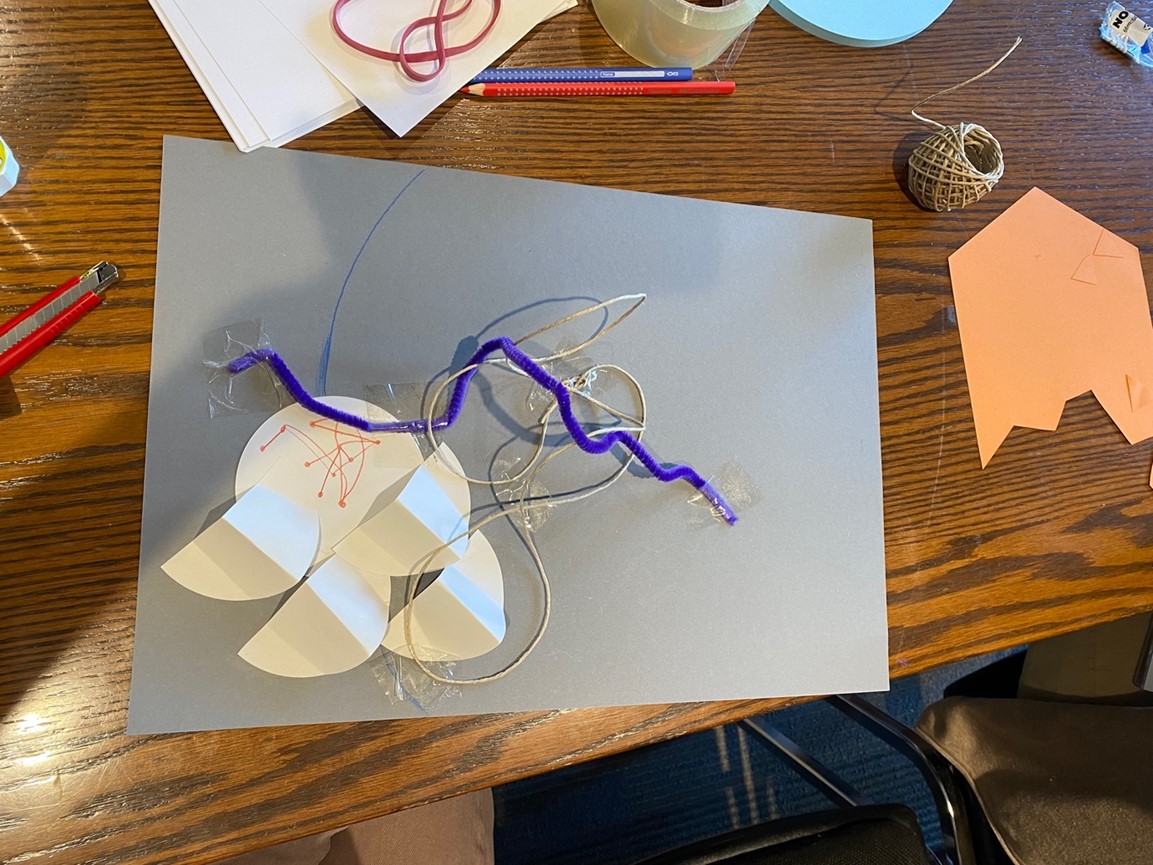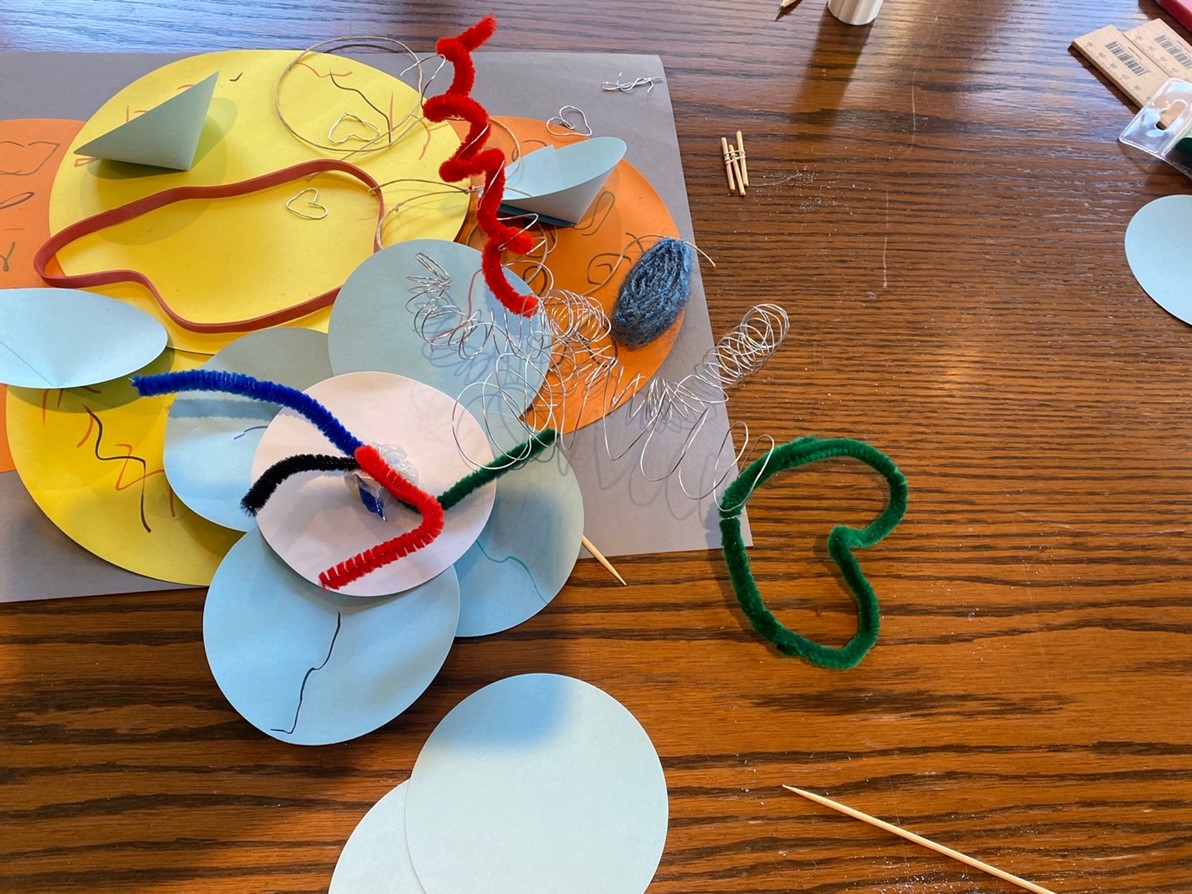Design Prototyping at ESG Conference 2022: The Role of Transdisciplinarity in Objects.
by Farina Luka Tolksdorf
At the end of October 2022, the Earth System Governance (ESG) Conference took place in Toronto. This interdisciplinary conference focused on Governing accelerated transitions: justice, creativity, and power in a transforming world and was hosted by the University of Toronto and the University of Waterloo together with the Earth System Governance Project. As tdAcademy, we conducted a workshop on the role of transdisciplinarity in research and policy advocacy in the context of Earth System Governance. In the following, we will report about the unconventional process and inspiring outcomes. The workshop was designed and moderated by Farina Tolksdorf and Daniel Lang from Leuphana University Lüneburg within the topic line context dependencies at tdAcademy together with Christopher Orr from the University of Waterloo.
The four-day conference with more than 130 on-site, hybrid, and online event formats brought together researchers from around the world to discuss global and local environmental changes and how to manage them. The diverse backgrounds of researchers from disciplines such as the social sciences, law, development studies, and international relations allowed for an exchange on multiple approaches to the social, economic, and environmental challenges of our time. Transdisciplinarity was a frequent cross-cutting theme and was referred to as an important approach to action for upcoming transformations.
As a prelude on Friday afternoon, the keynote speech by climate activist Tzeporah Berman made all participants once again aware of how important and urgent the end of fossil dependencies is for our climate. After all, 85% of global carbon dioxide emissions come from oil, coal and gas. According to Tzeporah, personal motivation is one of the most important drivers for transformations such as the energy transition.
Design Prototyping - Playful Approaches to Complex Topics
Personal motivation was also apparent among the researchers joining our workshop. Using an approach from design research, we wanted to explore the question of how the increasing role of transdisciplinarity is expressed in Earth System Governance (ESG) discourses and policy advice. Design prototyping is a method in which participants develop small models from simple materials such as colorful cardboard, wire, sponges to address a certain question or problem. The models provide surfaces for reflection and can help to objectify thoughts and ideas and provide (Peukert et al. 2020). Design prototyping is often used in collaborative processes with multiple stakeholders, as this method supports the exchange of multiple perspectives and knowledge types. Thus, it can help to overcome challenges in the process of knowledge co-production.
Innovative approaches allow for new perceptions
At the sight of the many colorful materials on the group tables in the seminar room at noon on Sunday, one or the other participant grinned in remembrance of earlier craft times in kindergarten. After three intensive conference days with many presentations, many of the almost 20 people were happy about the interactive and creative format as the last session of the conference.

Source: Farina Tolksdorf, 2022.

Source: Farina Tolksdorf, 2022.
First, as a warm-up, participants were asked to choose an object from the table that they associate with transdisciplinarity. One person chose a rubber band, since transdisciplinary research can take different forms and must remain flexible. Another person chose a sponge made of steel wool, whose composition of many small threads was meant to represent the complexity of the subject matter. Pulling a thread or untangling the sponge does not always mean making things simpler or improving the structure.
Insights into the prototypes
In the subsequent individual prototype building phase, we explored the question of what exactly transdisciplinary research approaches have contributed so far to the concerns of ESG research as well as to policy advice. Here, we focused on the experiences of the researchers themselves and their perceptions in the field.
One example is the following prototype, which shows how transdisciplinarity plays out in sustainability transformation processes. The small white paper wings represent overlapping experiences of people who develop shared understandings and networks in a certain context. The paper wings are components and complements of further parallel and chaotic processes, symbolized by the ribbons and pipe cleaners.

Source: Farina Tolksdorf, 2022.
After each person had presented their prototype, a challenging task followed: developing the individual prototypes into a joint model within small groups. The groups proceeded in very different ways. One group integrated elements of individual prototypes into a collaborative work, whereas another used the existing prototypes as a framework to show that perspectives often coexist, and that they should be connected rather than integrated. Within few minutes, many aspects of transdisciplinary research could be identified in the models – either delineated or connected by colors and the shape and texture of materials. In the prototype seen below, the group used wire spirals to represent iterative processes and feedback loops. By creating nodes, they showed the chaotic reality with unexpected difficulties. The integration of different types of knowledge (overlapping circular facilitation cards) and a caring and loving togetherness (wire hearts) were built as solutions to this messiness.

Source: Farina Tolksdorf, 2022.
It is difficult to summarize the results of the workshop in a few main statements to answer the question of what contribution transdisciplinarity can make to ESG research and policy advice. Rather, it is evident that the scope for interpretation is multi-layered and that the constructed prototypes display links to different levels and potential answers.
Participants reported that exciting discussions arose precisely at the personal level of reflection on their own research as the models were developed and considered. An essential experience was that many felt inspired to try out our method in other constellations of actors in the future.
About the Earth System Governance Research Network
Earth System Governance is a global interdisciplinary research network with over 500 fellows conducting research on the intersection of governance, environmental change and transformation. In addition to its own journal, working groups and task forces on topics such as knowledge production, the Sustainable Development Goals or new technologies, the annual Earth System Governance Conference offers opportunities for exchange and networking.
More info from the website: https://www.earthsystemgovernance.org/
Design Prototyping Literature:
Peukert, D., Lam, D. P., Horcea-Milcu, A. I., & Lang, D. J. (2020). Facilitating collaborative processes in transdisciplinary research using design prototyping. Journal of Design Research, 18(5-6), 294-326.
